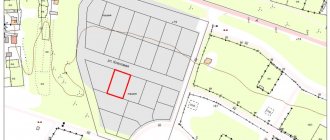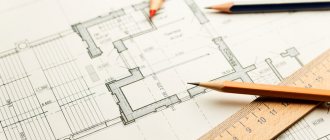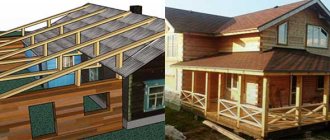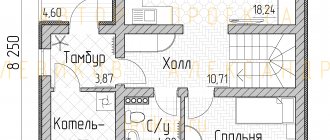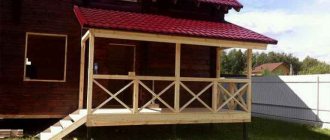When building a private house, the first place comes to the construction of engineering networks and communications, power supply in a private house. And here the main role is played by power supply. Electrical household appliances, their power and quantity are of great importance in creating home comfort.
First of all, for power supply, it is necessary to complete a project; it is created on the basis of technical specifications. Then, based on the design, electrical installation work is carried out. All this must be performed by a specialized organization that has the appropriate license.
An example of a power supply project for a private residential building
Why is the project needed?
The main purpose of the project is to determine the calculated data on the load characteristics of the network.
The main purpose of a typical electrical project in a private house is to determine the calculated data on the load characteristics of the internal network. In this case, the individual characteristics of the country house or two-story cottage being built are taken into account. According to the legislation of the Russian Federation, a project for connecting electricity to a private house will not be required if the power consumption declared by its owner does not exceed 15 kW (taking into account what is already available).
When submitting an application to Energosbyt for a standard technological connection, it is enough to provide a calculation of the total power consumption and a single-line diagram of the local power supply. However, some regional representatives of energy supply companies indicate in the agreement the need to prepare an electrical design. In this case, it is assumed that it necessarily contains a wiring diagram indicating specific consumers and exact data on the metering device.
What equipment will be required for electrical installation?
Carrying out electrical work in a private home will require not only certain knowledge and skills, but also a set of certain tools. Many self-taught craftsmen forget about this nuance and begin work with only a couple of screwdrivers in their hands. This approach to the issue may not only end in failure in electrical repairs, but also lead to more serious consequences (with health).
There is a lot of equipment for electrical installation, and all the tools are varied not only in appearance, but also in purpose.
The first thing is, of course, the cable. By the way, some of the best cables can be bought here: Xcabel.
The electrician's tool kit also includes:
- Spanners. Their size can vary from 5.5 mm to 24 mm;
- Flat screwdrivers;
- Hammer;
- Chisel;
- Drills for concrete and metal. You will need drills with a diameter of 4 mm to 12 mm;
- If you are working on wooden country houses, you will need carpentry tools. This set of tools will allow you to easily make channels for laying wires, as well as holes for placing sockets and switches;
- Pliers, side cutters, round nose pliers;
- Needle file and file;
- Assembly knife, etc.
When working with electrical wiring, you will, of course, need a hammer drill. Thanks to it, you can not only drill a hole for the passage of wires from one room to another, but also clean out the grooves. Also, holes are drilled with a hammer drill for attaching brackets that hold the corrugation or wire.
Don’t forget about voltage indicators, this will help determine the voltage on a certain section of the circuit.
There are also devices that can detect hidden electrical wiring. This is very useful when renovating premises. After all, when making grooves for a new wire route, sometimes you can catch the old gasket, thereby ruining the existing electrical system, and this, in turn, leads to higher repair costs and an increase in the volume of work performed.
Typical power supply project for a private house
Single-line power supply diagram
The power supply project for a private house includes the following mandatory documents:
- Single-line electrical diagram (including distribution panel).
- A house plan indicating the locations of equipment, as well as a diagram of the location of sockets and lighting fixtures.
- Diagram of outlets outside the house, arranged for the purpose of connecting external devices or external outbuildings.
- Calculation data for the grounding loop.
- Plan for organizing a lightning protection device.
- Specification for protective and control equipment (hardware).
- Permits confirming the legality of the work performed by the design organization selected by the contractor.
The last sample working document is required if approval of the project with the energy supply organization is required.
How to choose a cable
The main component of any electrical cable is the core through which the current passes. The cores are isolated from each other and placed in a common sheath. They can be solid single-wire or twisted from many thin wires, multi-wire. Single-wire ones differ little from multi-wire ones in terms of charge transfer speed; electricians look at other parameters: strength and flexibility. Novice installers choose multi-wire cables, which are a little more expensive, but they are more flexible, easier to work with and extremely difficult to damage, while a single-wire core in the hands of an inexperienced electrician will be cut short. Also: single-wire strands are fragile: bend them several times and they break. Single-wire cables are easier to strip and insert into the terminal, but now for stranded wires there are special connectors and lugs that collect and fix all the wires before connecting.
The veins are made of copper or aluminum. In premises, according to the current PUE, copper-based wiring is used, but in old houses aluminum wiring has been preserved.
TrionixFORUMHOUSE Member
It is cheaper to replace copper with aluminum now, not after a fire.
The most popular classification of electrical wires is by the number of cores.
Requirements for a private home power supply project
Layout plan for a country house
Before preparing a project for a country house, for example, you will first need to obtain specifications for its development from Energosbyt. They spell out the entire list of issues related to the arrangement of electrical wiring. The following items are required to be included:
- Wiring plan for a country house.
- Type and installation location of the distribution panel.
- List of installed equipment, including electricity meter and circuit breakers.
- Breakdown of consumers into groups and other issues.
The specifications also stipulate the power allocated to this facility (no more than 15 kW).
It is necessary to prepare a statement of balance sheet ownership, in which all attention is focused on delimiting the areas of responsibility of the supplying organization and the private consumer. It is drawn up in the form of an agreement concluded between two interested parties and approved after agreement.
The presence of this document allows you to:
- distribute the responsibilities of each party for servicing “their” section of the electrical network;
- have a clear idea of who is responsible for repairs if the supply line (power cable, for example) is damaged;
- connect new facilities to existing and existing electrical networks.
If it is not possible to immediately establish the boundary of responsibility, it is chosen along the perimeter of the outer wall of a private house or land occupied by the owner. With mutual agreement of the parties, other delimitation options are allowed.
What are the features of electrical wiring in monolithic houses?
Installation or repair of electrical wiring in monolithic walls is slightly different from conventional electrical wiring. There is a lot of preparatory work involved: laying a shaft for the wires, gating surfaces, punching holes in the monolith (which, as is known, has high strength and hardness).
Grooving a monolithic surface is a rather complex and labor-intensive task, hence the usually high cost of such work in monolithic houses. It should also be noted that when drilling concrete there is always a lot of dust generated. Therefore, the work is carried out with a “grinder” or a wall cutter with an industrial vacuum cleaner, which reduces the amount of dust during gating.
The presence of reinforcement in the walls can add great complexity to builders. Often, in order to make a hole for a wire to pass from one room to another, it is necessary to drill several times, because the drill rests and hits the reinforcement.
There are quite a lot of nuances of laying wires in a monolithic wall, but for professionals familiar with this work there will be no problems.
House electrical circuit diagram
Connecting a SIP to a house
The diagram for connecting a house to a single-phase electrical network takes into account the following mandatory points:
- The cable or the SIP wire that replaces it is connected directly to the switchboard buses through an electric meter.
- After it, each power supply group must be connected through its “own” linear automatic device, pre-calculated based on the current setting.
- The working zero and protective wire of each linear group, unlike the phase conductors, should not be switched.
The neutral core “breaks” like a phase only if there is an RCD in the linear branch, which can be placed both on one group and on their combination. Next, the wires from the group circuit breaker are laid towards the distribution boxes. From them, electrical wiring is routed to end consumers (power sockets and lights with switches).
When preparing an electrical project, the structure of the building must be taken into account, on which the chosen method of laying wires depends.
In houses with a large number of rooms, when drawing up an electrical wiring diagram, the following are taken into account:
- when designing, it is convenient to divide consumers into separate groups: one for each room and for service annexes;
- in the example of a power supply project for a private house, separate branches with a circuit breaker are taken into account, designed to protect a washing machine or oven;
- When preparing design data, the requirement of uniform distribution of loads across groups is observed: due to the significant number of consumers, they often load the network unequally.
Taking into account all these recommendations, you can move on to the practical part of the project.
Review of common design mistakes
Defects in the design or planning of work entail installation errors, and this threatens disruptions in the functioning of the electrical network. The result may be the failure of expensive equipment, and even worse, an electrical injury to one of the residents.
What mistakes should you avoid:
- use low-quality products without labeling and certification;
- make one-to-one calculations - any technical products and materials must be purchased with a reserve;
- include in the project the installation of conventional sockets for connecting hobs, boilers, heat guns;
- in wooden houses, plan to use closed wiring - more complex and subject to the list of requirements of the PUE;
- design switching of low-voltage and high-power power wires in one distribution box;
- plan to connect wires using twists that are dangerous for further maintenance and operation; the best option is ready-made terminals;
- make circuits from aluminum and copper wires, and also use aluminum wiring.
Some errors relate to incorrect calculations. For example, grooves under the cable with a closed installation method should be laid to a depth of 2-2.5 cm, no less.
It is incorrect to place distribution boxes at the bottom or at human height. Their place is under the ceiling, 20 cm from a suspended structure or concrete ceiling slab
You cannot connect the grounding of sockets using a cable, or ground them on cast iron sewer or steel gas pipes.
If you do not know how to properly install electrical wiring in your home, contact the design organization. Specialists will visit the site and draw up a wiring diagram based on specific installation conditions.
Electrical network design
External wiring is laid in cable ducts.
Based on the considered diagram for a private house, when preparing a detailed design for an electrical network, you will need to calculate the required number of groups and then distribute consumers. In addition, it is important to decide on how to install the line and calculate the possible load on all devices connected to it.
Choosing a mounting method
Preparatory procedures begin with choosing the method in which the electrical wiring is supposed to be laid. For a private house made of timber, for example, the most suitable is the external laying, in which it stretches along the surface of the walls. If desired, it can be hidden in pre-prepared plastic cable channels.
Hidden installation has to be resorted to in private houses built from brick, foam blocks and similar non-combustible materials.
Total load calculation
At the next stage of work, it is necessary to calculate the total load falling on all consumers connected to the network, which is very important for their subsequent breakdown into groups. To do this, you need to understand the number of devices and the maximum power consumed by each of them. The easiest way to find out this indicator is from the passport that is attached to any of the household products.
By summing up all the indicators and obtaining the total power consumed by all connected loads, it is possible to find out the maximum current in the circuit. To calculate it, you should use the practically derived relationship, according to which a power of 1 kW at a voltage of 220 Volts corresponds to a current of 4.5 Amperes.
Distribution of loads by groups
Distribution of electrical load in the house
The breakdown of consumers is carried out taking into account the fact that the total power of one group of lines of sockets and lighting devices should not exceed 16 Amperes. Based on this requirement, it is necessary to distribute the existing loads into separate groups.
To connect and service powerful loads like an electric furnace, you will need to install a machine with a rating of 25 Amperes in the consumer group.
Distribution into groups is made taking into account their distribution among rooms and depends on the power of a particular load. The PUE recommends separating group lighting lines from power outlets, which is important for buildings with a large number of rooms.
Wiring selection
Before independently laying electrical wiring in a private house, you must carefully calculate the cross-section of its constituent conductors. The durability and fire safety of the entire power supply system depends on the correctness of this procedure.
According to clause 7.1.34 of the PUE, since 2001, only copper cables and wires have been allowed to be used in wooden residential buildings and other buildings.
The cross-section of the conductors should be selected taking into account the load found by calculation on all types of group lines. To avoid unnecessary calculations and simplify the choice of this indicator, we usually proceed from the rated current of the group circuit breakers.
The type of wiring installation (closed or open) must also be taken into account, since for conductors laid in different ways, the conditions for heat removal will be different. In both cases, for group lighting lines the cross-section is selected to be no more than 1.5 mm square, and for power (socket) lines - no less than 2.5 square mm. mm.
Analysis of electrical wiring diagrams
Let's look at several typical schemes that are used during construction or major repairs. All options are united by the presence of a protective group: dividing the electrical wiring into circuits, each of which is connected to a separate circuit breaker.
Option #1 – general plan for the whole house
This is not a wiring diagram, but a listing of all electrical devices that are planned to be located in the house. Using it, you can calculate how many automatic machines and RCDs you will need, and calculate the total number of power lines leading to the switchboard.
Here you should indicate the type of power supply network in order to select the correct cable. For a 3-phase network, use a 5-wire cable, for a 1-phase network, use a 3-wire cable.
The organization that supplies electricity to the house is responsible for some of the devices. This is an electric meter and input protection device, which is usually installed on the outer wall of the house or on a pole supplying the cable (+)
The electrical panel is located in a separate room inside the house, in the hallway, or in the nearby garage. Voltage stabilizers and a backup generator are also installed there, which supplies the house with electricity during periods when the centralized line is disconnected.
For ease of maintenance of a two- or three-story mansion, an electrical panel is also installed on each floor. All distribution boards are connected to an input cable - copper wire with a cross-section of 15-35 mm².
There is no need to skimp on protection devices: it is recommended to install an RCD on each socket circuit, circuit breakers on the light lines for each room, as well as for air conditioners, heating boilers, underfloor heating systems, etc.
If you plan to place several lamps and sockets in a separate room, then you need to mount a distribution box at the entrance. It connects the input cable to the lighting line and socket group.
Option #2 – sample wiring diagram
To draw a wiring diagram, you need to take a house plan and mark on it where electrical devices will be installed.
This document becomes the basis for drawing up an estimate - it is easy to use it to count not only the number of switches, sockets and additional materials, but also to calculate the footage of wires.
Wiring diagram of the electrical network of a one-story house. To make it easier to navigate the electrical lines leading from the electrical panel to the rooms, the contours are marked in different colors
The point of entry of the power line into the house and the installation location of the electrical panel must be indicated. Then, on separate lines, distribution boxes, electrical installations, and lighting fixtures should be noted.
High power devices also need to be labeled as they are powered by individual lines.
If outbuildings are connected to the building - a bathhouse, a garage, a workshop - this should also be reflected in the diagram, since it is part of the electrical wiring in a particular private house.
There are no special symbols for hand-drawn diagrams; the main thing is that the home owner and installers understand what lies behind each symbol. However, it is better to use generally accepted symbols for electrical circuits in order to later understand the project yourself.
Option #3 – technical solution for a small house
All plans and diagrams are similar, since they are built on the same principle, but they may differ in the number of installed sockets and lighting circuits, and, consequently, in the number of protective devices connected to them.
A sample diagram for a one-story house, inside of which there are 3 rooms, a corridor, a kitchen, and a bathroom. The power lines are assembled so that one of them connects the corridor and the room, the second - 2 rooms
An input switch is installed in front of the network, which, if necessary, can be used to de-energize the entire house and turn off the electricity meter. Then comes the counter, and after that comes the protective groups.
For powerful units, such as a heating boiler or a washing machine, 25-40 A machines are installed. The wire cross-section should also be increased to 3.5-5 mm².
Using such a diagram, it is not possible to calculate the footage of wires, but the number of sockets, distribution boxes, switches, RCDs, and automatic circuit breakers is easy to calculate.
Option #4 – electrical circuit for the basement/garage
Often, the basement of a private house becomes a utility room where a washing machine is installed and a dryer is equipped, a cellar for storing crops, or even a warm garage. It is much more convenient when such a room is fully equipped with sockets and lamps.
The diagram shows the wiring of the electrical network with an electricity meter. If the garage is located in the basement or in an extension, a separate meter is not needed
If you do not take into account the meter, the electrical panel will remain with input circuit breakers, a grounding bus, a 20 A RCD, three circuit breakers: on the lighting line, for sockets and for the compressor. Additional powerful equipment also requires automatic protection.
Option #5 – principles of kitchen wiring
The electrical circuit for a kitchen in a private house is practically no different from a similar circuit for a city apartment.
Its peculiarity is a large number of connected electrical appliances, therefore, it will be necessary to allocate several power lines with separate circuit breakers.
The main difficulty is placing the socket blocks so that they are close to the devices and at the same time freely accessible for possible repairs or switching of devices (+)
When drawing up a vertically oriented diagram, it is necessary to display on paper a furniture set with the arrangement of all equipment.
Socketless connections, for example, at an oven, are made under the countertop, near the wall, while sockets for a toaster, electric kettle, multicooker, and food processor are better placed above the work table.
Small household appliances are easier to unplug if the electrical installation device is at hand. Sockets installed near the sink must have a degree of protection of IP44 or higher.
Preparatory work
The direct design of the electrical supply of a house is always preceded by a preparatory stage. It includes pre-design work such as:
- Inspection of buildings, taking measurements and drawing up floor plans
- Obtaining technical specifications
- Concluding an agreement for the supply of electricity
Before proceeding with the installation of the electrical network, the finished electrical project must be agreed upon with all interested organizations and individuals.


